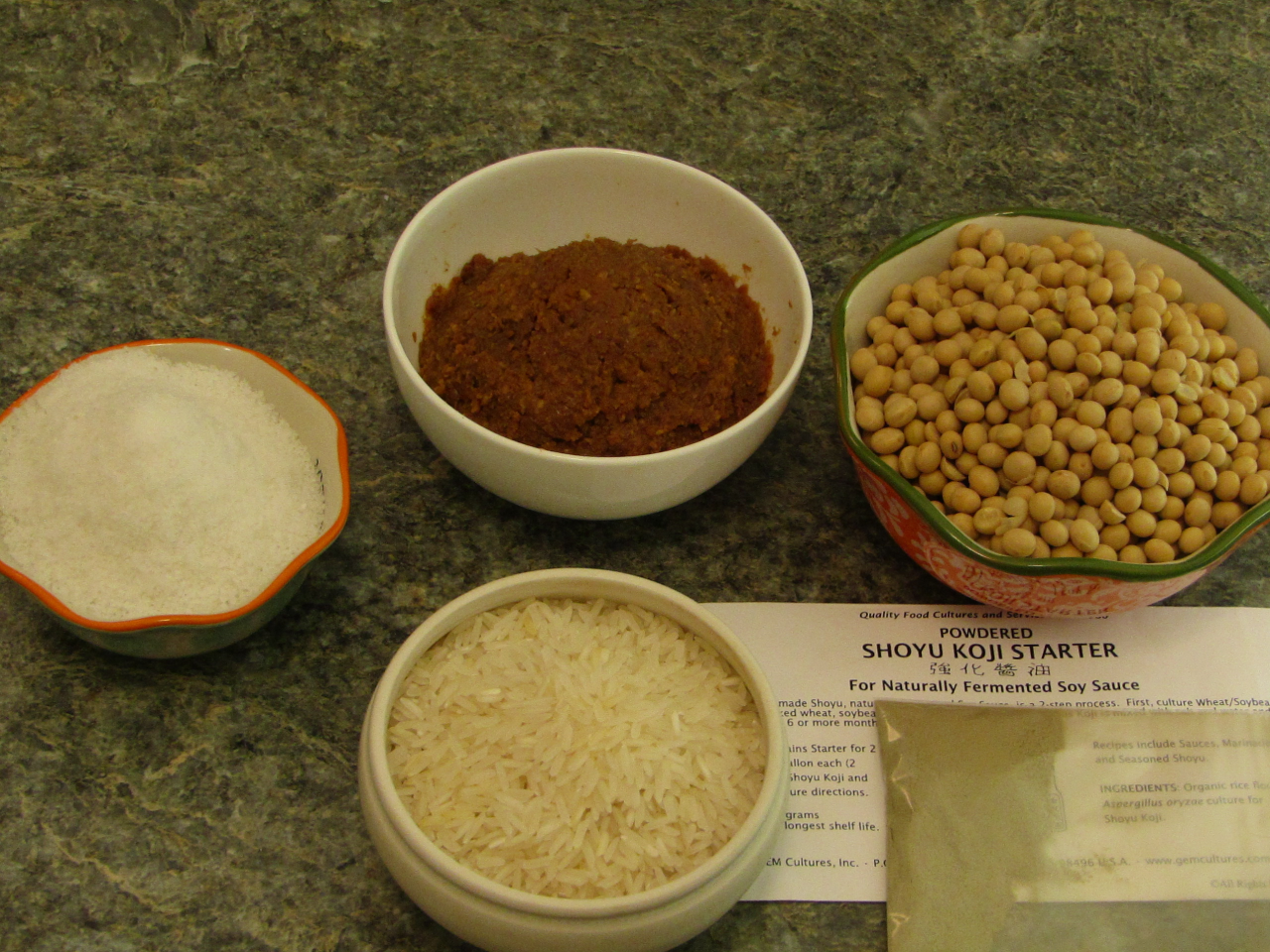This post contains affiliate links.
By the time you open a container of miso it is at least 6 months old. It has been cooked, blended, incubated and aged and as a result it is hard to detect what it was in the first place. Store bought miso is a thick paste which is used for flavoring a variety of recipes including miso soup, dressings and marinades for many Japanese recipes.
Miso is made from boiled soybeans, kogi, salt and a bacterial starter. They are mixed together to form a paste and sealed to incubate for at least 6 months. Depending on the type of miso being made the kogi can be made from rice, barley or other grain.
In traditional miso making the miso is weighted down with stones piled on the top of a wooden cover. The liquid which is pushed out of the miso paste as a result of the pressure is tamari and is also aged to take on a dark red color over time.
How soybeans are used to make miso
Soybeans are the main ingredient in miso, making up the bulk of the volume of miso. Soybeans are a typical bean made up of sugars and starches as well as protein which makes them difficult to digest, this is why beans are notorious for causing gas. During the incubation process the starch is broken down by the enzymes in the kogi to make additional sugar for the bacterial culture to consume.
Soybeans are washed, soaked for 24 hours and then boiled for 5-6 hours until they can be easily crushed. They are then mashed together with the other ingredients and some of the cooking water used in the boiling process to reach the right consistency. Any discolored beans are discarded as they may add unwanted flavor to the finished miso.
Once the soybeans are mixed with the kogi the enzymes in the kogi will begin to break down the starches in the beans into simple sugars which the bacterial culture can use for its respiration. This helps to make miso more digestible than other bean pastes.
What koji is and how it is made
Describing what koji is can get a little confusing as the name koji refers to two things which are needed during the fermentation process of many Asian fermented foods. It can refer to the mold Aspergillus oryzae which breaks down the starches in the substrate it is added to or it is the mold and substrate together after it has incubated for a period of time. Usually when koji is required in a recipe it is talking about rice koji which is steamed rice incubated with Aspergillus oryzae for 3-5 days depending on the purpose the kogi is used for.
Koji is made by inoculating rice or barley with Aspergillus oryzae which breaks down the starch in the rice into smaller chain sugars in a process called saccharification. The steamed rice is spread out on wooden trays and inoculated with koji mold and incubated at a temperature between 80-97 for 2-3 days.
For sweet light colored miso rice kogi is used with a little barley for flavor and texture but for a stronger, more rich miso barley koji is the main koji used. As the miso ages it turns from a pale beige color to a deeper red tone. Miso aged 6 months is called sweet white miso as it still contains much of the sugar available from the beans whereas aged miso will develop a deep red color and become richer in umami flavor the longer it ages.
How to get miso culture and what it does
Miso culture is a collection of lactic acid bacteria which consume the simple sugars found in the bean and koji mash. As this happens the miso’s pH will begin to drop. Lactic acid bacteria produce lactic acid and other organic compounds which protect its environment from contamination from unwanted bacteria, yeast and mold. These acids and organic compounds give the miso its unique flavor.
The miso culture is found in any commercial container of miso which has not been pasteurized. To inoculate a batch of miso with a miso culture, mix a tablespoon or so of fresh store bought miso with the bean and koji mash. The culture in the miso will grow quickly and dominate the mixture, preventing other bacteria, yeast and mold from gaining a foothold.
Type and amount of salt
Salt is one of the most important ingredients in miso. It provides many functions which include preservation, flavor and enzyme production. Miso is highly salted often with an amount of salt which would make most foods inedible but for miso it is needed for a number of reasons.
Miso is made using koji which is produced using a mold which breaks down the carbohydrates in the beans, rice and barley into sugars. This makes them available to the lactic acid bacteria found in the miso culture. Without the salt in the miso the mold would continue to grow and completely break down the carbohydrate.
Salt is a preservative which prevents several spoilage bacterial growth but it also prevents the growth of many yeast species and lactic and acetic acid bacteria. This limits the number and type of bacteria which grow in the miso. This provides flavor

